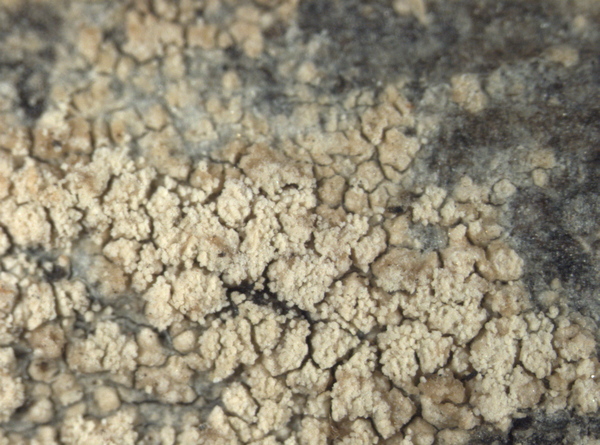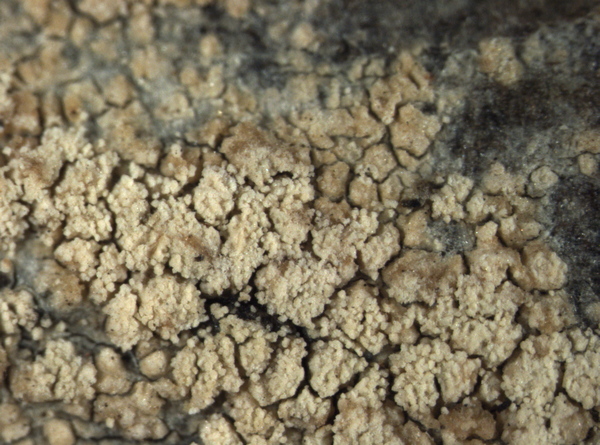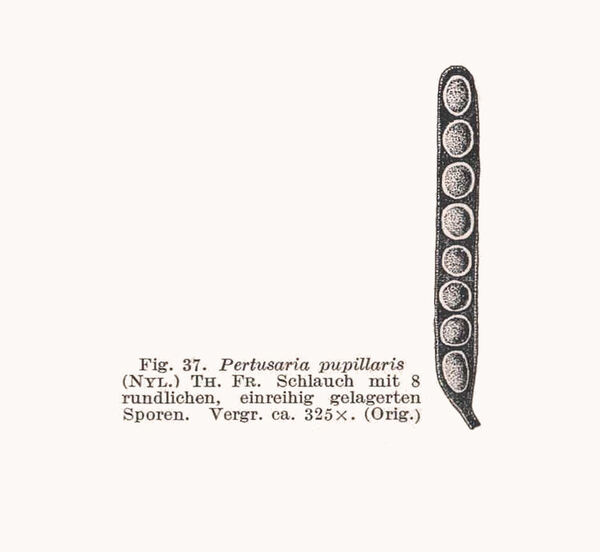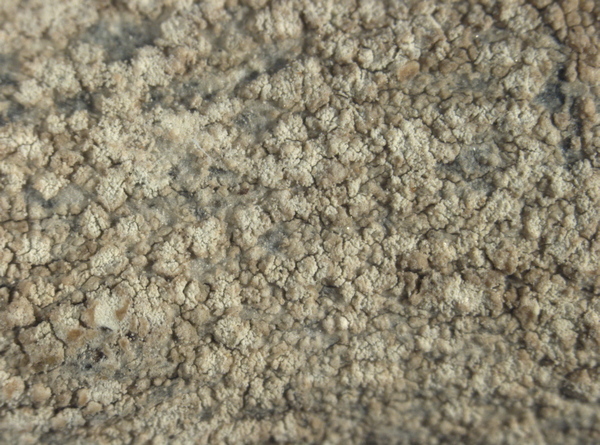Pertusaria pupillaris (Nyl.) Th. Fr.
Lichenogr. Scand., 1: 305, 1871. Basionym: Lecanora pupillaris Nyl. - Lichenes Scand.: 167, 1861.
Synonyms:
Distribution: N - TAA (Nascimbene 2005, 2014, Nascimbene & al. 2006e, 2008c, 2014, 2022, Thor & Nascimbene 2007, Nascimbene & Marini 2015, Nimis & al. 2015, Trindade & al. 2021). C - Tosc. S - Cal (van den Boom & Giralt 2002).
Description: Thallus crustose, very thin, usually endosubstratic in the esorediate parts, whitish grey to dark grey, continuous, sorediate, forming regular to irregular, up to a few cm wide patches, unzoned and without a distinct prothallus. Soralia whitish or faintly yellow-white, mostly discrete, sometimes concentrically arranged, more or less orbicular and excavate-ulcerose to flat, rarely somewhat convex, to 0.5(-0.8) mm across. Soredia mostly farinose, up to 40 μm in diam., sometimes gathered into larger, rounded to elongate up to 80 μm wide consoredia. Apothecia rare, lecanorine, immersed in thalline warts, usually 1 per wart, with a brown-black, epruinose disc and a prominent, sometimes sorediate, often finally excluded thalline margin. Epithecium olive-green, K+ violet; hymenium and hypothecium colourless. Asci 8-spored, broadly cylindrical, the apex with a broad ocular chamber, the outer sheath K/I+ blue, otherwise K/I-, with an inner extensible layer, Pertusaria-type. Ascospores 1-celled, hyaline, subglobose to broadly ellipsoid, 10-14 x 7-11 µm, the wall c. 1 µm thick. Pycnidia convex, the ostiolum blackish, becoming widely gaping, the pigment green, K+ violet. Conidia bacilliform, 4-6 x c. l μm. Photobiont chlorococcoid. Spot tests: soralia K+ yellowish then dirty brown-red, C-, KC- or KC+ yellow-red, P+ orange-red to rust-red, UV+ faintly whitish blue. Chemistry: fumarprotocetraric acid (major), protocetraric acid (trace).Note: a temperate to southern boreal-montane, perhaps holarctic lichen found on hard lignum and smooth bark; overlooked, being almost always sterile, and perhaps more widespread, albeit never common, in upland areas of Italy; to be looked for throughout the Alps.
Growth form: Crustose
Substrata: bark and lignum
Photobiont: green algae other than Trentepohlia
Reproductive strategy: mainly asexual, by soredia, or soredia-like structures (e.g. blastidia)
Most common in areas with a humid-warm climate (e.g. most of Tyrrenian Italy)
Commonnes-rarity: (info)
Alpine belt: absent
Subalpine belt: extremely rare
Oromediterranean belt: absent
Montane belt: rare
Submediterranean belt: absent
Padanian area: absent
Humid submediterranean belt: absent
Humid mediterranean belt: absent
Dry mediterranean belt: absent
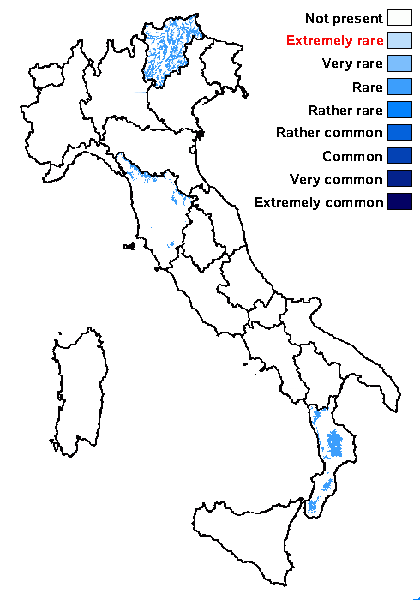
Predictive model
Herbarium samples
Growth form: Crustose
Substrata: bark and lignum
Photobiont: green algae other than Trentepohlia
Reproductive strategy: mainly asexual, by soredia, or soredia-like structures (e.g. blastidia)
Most common in areas with a humid-warm climate (e.g. most of Tyrrenian Italy)
Commonnes-rarity: (info)
Alpine belt: absent
Subalpine belt: extremely rare
Oromediterranean belt: absent
Montane belt: rare
Submediterranean belt: absent
Padanian area: absent
Humid submediterranean belt: absent
Humid mediterranean belt: absent
Dry mediterranean belt: absent

Predictive model
| Herbarium samples |
 INDEX FUNGORUM
INDEX FUNGORUM
 GBIF
GBIF
 DOLICHENS
DOLICHENS


